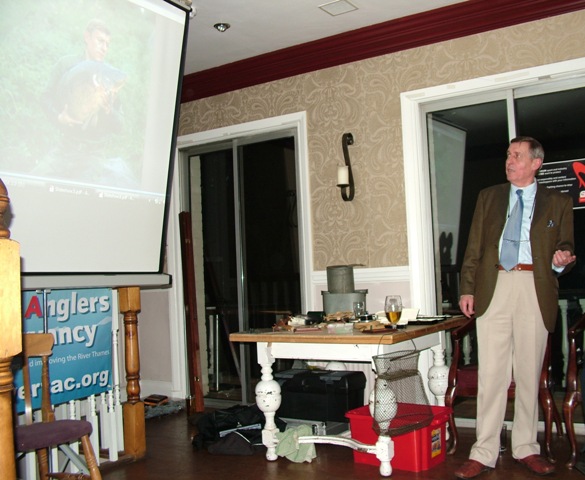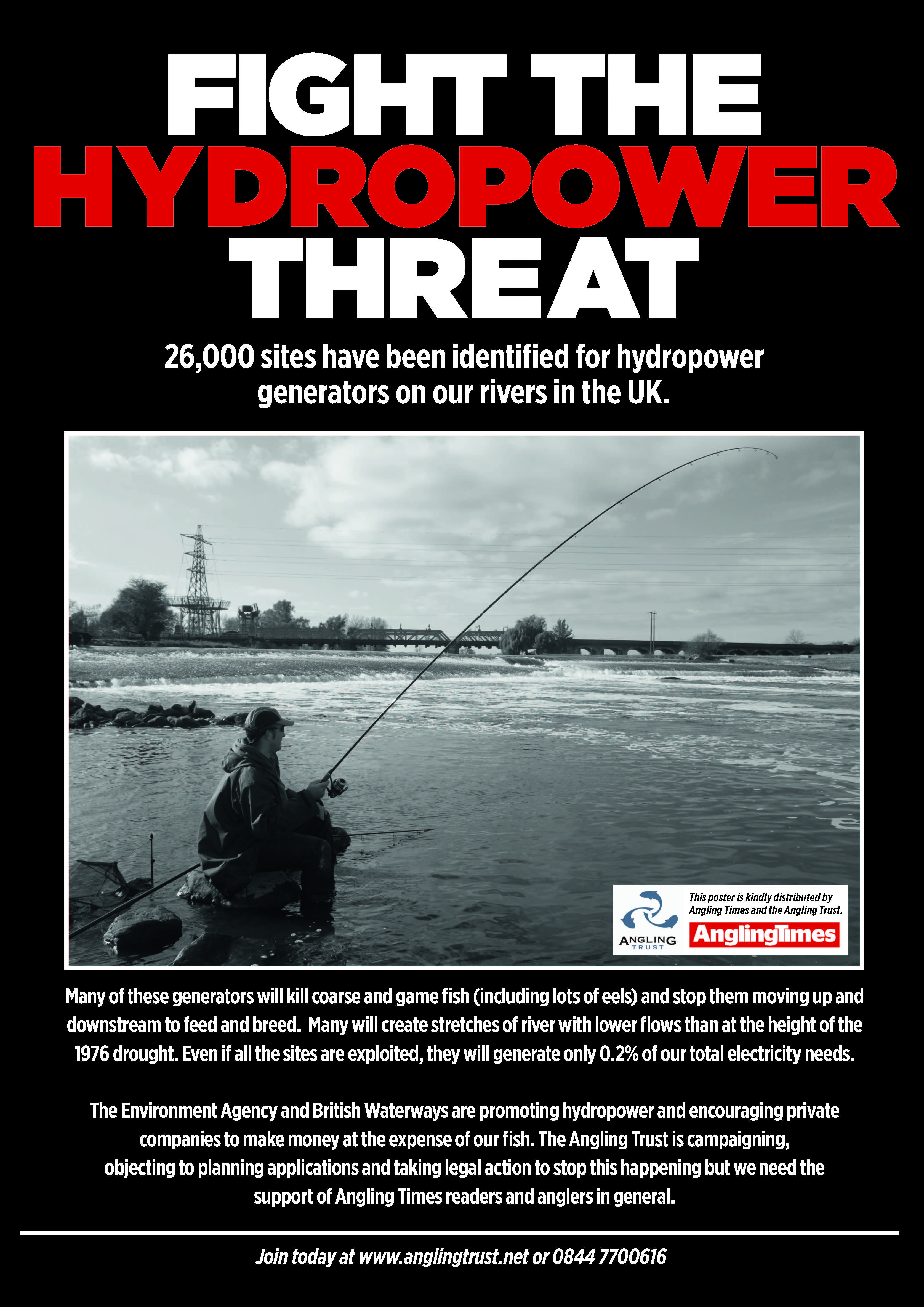-
- Buy a UK rod licence: EA Link
- 0800 807060 EA Hotline, Pollution, Poaching
- Thames Region River Levels
- Thames River Conditions
- Thames Temps and Clarity
- Thames Fishing Byelaws
- Thames Annual Tidefest
- Thames Record List
- Thames Eel Monitoring
- EA Annual Fisheries Report
- EA Flood Warnings
- Thames Sewage Discharge Notifications
- Thames Sewage Events
- Thames Tideway Tunnel
- River Thames Scheme: Reducing flood risk from Datchet to Teddington
- Martin Salter: Fighting for Fishing Blog
- Duncan Charmans World of Angling Blog
- Angling Trust
- Water and sewerage companies in England: environmental performance report 2013 – 2016
- EA Pollution incidents: 2014 evidence summary
- EA Pollution incidents: 2015 evidence summary
- River Crane and DNR Fisheries Impact assessment
- Links
Recent Tweets
Error retrieving tweetsNews Archive
Thames Water ordered to pay £345,000 after serious sewage spill
Posted in News
Tagged Environment Agency, Fish, Fish KIll, Fishing, Pollution, Sewage, Thames Water
Comments Off on Thames Water ordered to pay £345,000 after serious sewage spill
New Information about Rod Licence Spending
The Angling Trust warmly welcomes the publication by the Environment Agency of new reports explaining how freshwater anglers’ rod licences are spent regionally and nationally. These reports are the product of a series of meetings, initiated by the Angling Trust in 2009, to encourage greater transparency and accountability by the Environment Agency about how it delivers its management of freshwater fisheries and angling. We congratulate the staff of the Agency responsible for preparation of these clear and helpful reports and to the many excellent fisheries staff who have helped deliver the outcomes at a local level.
We will continue to work at a national and regional level to ensure that the priorities of anglers and fishery owners are reflected in the work carried out by the Agency and that further steps are taken to increase the information available about how funds have been spent. At a time of budget cuts in all public bodies, we need to ensure that fisheries funding is not diverted to other parts of the Agency and that fishery staff time spent on supporting other parts of the EA is properly recharged.
It is notable that the Government’s contribution to rod licence expenditure has declined in relative and real terms consistently over the last decade. The Trust will continue to campaign to protect, and in future increase, this Grant in Aid to reflect the widespread benefits of angling and healthy fisheries to society in general, and not just to anglers who pick up much of the cost of this work.
The Trust will also be working closely with the Environment Agency’s fisheries sector to identify ways in which greater value for money can be achieved from the limited resources available, so that more can be done to achieve the Agency’s statutory duty to maintain, improve and develop fisheries, including angling.
Mark Lloyd, Chief Executive of the Angling Trust said: "The Angling Trust, on behalf of all anglers, asked the Agency for these reports and we think that this new, detailed information will help anglers understand about how their money is spent. We congratulate the reports' authors on producing such clear and detailed information. Buying a rod licence is not just important to comply with the law, it's important for the future of our fisheries."
The Reports are available for download below:
Posted in News
Tagged Angling Trust, Environment Agency
Comments Off on New Information about Rod Licence Spending
Kingston Margin Clean Up – Trolley Madness
The Sunday dawn on 27th February in Kingston was met with the sound of boats arriving and TAC volunteers preparing for a day of more rubbish removal.
We all met outside the John Lewis Centre at Kingston riverside 8.30 am for a welcome cuppa and to sort the equipment out. Those in the boats were to spend the day ferrying the rubbish to the barge that the EA Waterways team had moored for us on Turks pier, upstream of where the Hogsmill joins the Thames.
Fourteen volunteers attended along with three children and using grappling hooks, boat hooks, strong rope and a bit of muscle set about pulling out the debris.
As the river was coloured after the rain, it was a journey into the unknown but very quickly it became clear what was in store (or not in the stores!) .
With a fair amount of huffing and puffing the shopping trolleys started to emerge, with the kids identifying a complete set excluding Tesco and Lidl. Added to this a full sized Television which took some lifting
We carried on upstream, with the Hogsmill River receiving the same treatment, an enormous branch, very nearly the width of the river had us all wondering how it got there, proof positive of the power of floodwater.
By lunchtime the EA barge was very nearly full, and we were beginning to wind down when we encountered a large metal ‘wheelie bin’ submerged and upside down. Using one of the boats we eventually managed to get four ropes attached to it, it took nine volunteers to pull it to the surface, where we paused for breath before getting it on the riverbank. It was then dragged barge and manhandled it aboard.
The final result on a very satisfying and enjoyable morning was thirteen shopping trolleys, two bicycles, a TV, seat, scaffold poles, some very large branches, copious amounts of decaying metal, plastic, a solitary traffic cone and the large wheelie bin.
An enormous thank you to the Environment Agency Waterways team for the use of the barge, and to Turks for allowing it to be positioned at their mooring.
Posted in News
Comments Off on Kingston Margin Clean Up – Trolley Madness
Anglers’ Fury as Hydro Project Given Go-ahead
|
|
|
|
|
|
|
Anglers’ Fury as Hydro Project Given Go-aheadAnglers expressed dismay and anger that a hydropower project at Pershore on the Warwickshire Avon has been given the go-ahead by the Environment Agency, despite evidence that the scheme will destroy vital fish habitat and reduce flows to a trickle.The Angling Trust objected to the scheme on the grounds that the developer had provided absolutely no environmental information with the application, that the flows over the weir at Pershore will be reduced to a trickle for most of the year. This installation will not only destroy a prime angling spot, but it will also destroy vital spawning habitat in the weir pool for the population of chub and barbel over several miles of the river. The Environment Agency is obliged to inform objectors of their decision, but failed to let the Angling Trust know that the scheme would be going ahead.Angling Trust Technical Director Alan Butterworth said: “I have commented on more than 70 schemes on behalf of the Angling Trust over the past year and this is one of the worst I have seen. There is a complete lack of analysis of the turbine’s impact on the water environment by the developer and the Environment Agency’s own internal fisheries experts have been ignored. It should not have been permitted.”The Angling Trust has recently met with the Chief Executives of the Environment Agency and British Waterways and with Environment Minister Richard Benyon MP to set out its concerns about the permitting and licensing of schemes which will damage river flows, fisheries and other aquatic wildlife. Details of its national campaign on this subject can be found HERE.ContactMark Lloyd, 07973 468198 or mailto:mark.lloyd@anglingtrust.net |
Posted in News
Tagged Angling Trust, Hydropower
Comments Off on Anglers’ Fury as Hydro Project Given Go-ahead
An Evening with the TAC – Mike Wilson
The Thames Anglers Conservancy were delighted to host an evening with Carp Angling Legend, Patron and true gentleman Mike Wilson.
An audience of around 50 people enjoyed a historic journey through our sport blowing away many myths and probably creating more legends. We were delighted that TAC Patrons Ruth Lockwood and Terry Hearn came to the event and Mike enjoyed plenty of banter with another Carp legend Richie Macdonald.
Mikes presentation took in much of history of modern day Carp angling with the developments in tackle and baits from someone who was there in the pioneering days.
From early attempts at different baits including sprouts and potatoes to discovering corn and maize as devastating baits, to inventing the latching light on bite alarms which we all now take for granted.
From his time at Savay lake we were taken through the original stocking from Donald Leney of King Carp to the swims and the capture of some famous fish
Mike is pictured below on a rare (at that time) Thames Trip where he fished and caught for a tackle advert
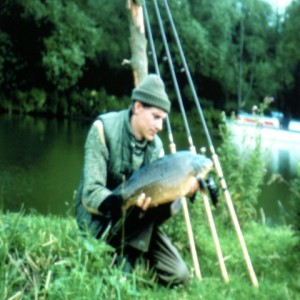 70’s Thames Carp from Shillingford [Oxon]
70’s Thames Carp from Shillingford [Oxon]
Mike spent his pioneering years with the likes of Dick Walker and others and recounted many stories and tales from the time.
 Mike sharing photos with Pete Stone, Gerry Berth-Jones, Fred Buller [ Fred J Taylor out of shot] About 1983
Mike sharing photos with Pete Stone, Gerry Berth-Jones, Fred Buller [ Fred J Taylor out of shot] About 1983
In a single evening there was simply not enough time to cover ever even a percentage of Mikes knowledge so we hope part two will take place later in the year.
A massive thank you Mike from all at the TAC
Posted in News
Comments Off on An Evening with the TAC – Mike Wilson
Changes on the River Thames
Perhaps borne out of many blank sessions on a notoriously moody river, the list of complaints from most Lower Thames anglers is a long one. “Too many mitten crabs”, “Cormorants eat all the fish”, “Where’s all the fish gone?”. From the grassy banks of Windsor down to Wandsworth’s urban jungle, we all say the same.
To find out what could be done, the Thames Anglers’ Conservancy visited John Sutton, the Environment Agency’s Fisheries Team Leader for the South East Area and George Gerring, the Thames Catchment Officer.
We led with a subject close to Thames anglers’ hearts – Chinese mitten crabs. In a recent Thames study conducted by the Natural History Museum for DEFRA, 539 mittens were caught in 15 months from only 4 sites. They are also caught in high numbers both in the fyke nets of the commercial fishermen below Tower Bridge and by anglers upriver. We asked John, more in hope than expectation, how to control mitten crabs.
Half expecting to hear that further studies need to be done, we were delighted to hear that for the first time ever, the EA will be able to issue authorisations this year to trap mittens in the tidal Thames. Commercial operations have proved successful in Holland and the DEFRA study concludes that the Thames mitten is fit for human consumption. Details have to be finalised such as the best design to prevent other fish, such as eels, being caught in the trap. Also even on the tidal Thames, by legislation, otter guards need to be built in. Design details aside, this news will be warmly received by Thames anglers.
Cormorants were next on the agenda. The lock-keepers at Richmond report that squadrons of these fish-eating predators fly up the estuary daily, to hunt from the weir posts of Teddington, Molesey and many other vantage points upriver. They eat fish to survive and are following their instincts but numbers are so high now that anglers are looking at control options. We presumed shooting them as they pass over Westminster Bridge wasn’t an option, so what can be done?
John explained underwater cover is all important for the fish. Without natural refuge areas such as weedbeds and sunken trees, fish are vulnerable to predation by cormorants.
“Anglers say they see cormorants dive and come up without fish, so surely the fish are all gone. Studies have shown though that fish behaviour changes when cormorants are present, with the fish either moving or hiding.”
“On the Jubilee River, a Thames tributary, there is less refuge from predators and flood flows. This is due to the Jubilee being a flood channel, so the plant life is less able to take hold, and there is less in-stream habitat for fish. As a result, you see cormorants hunting the Jubilee rather than the nearby Thames which has higher plant growth and more in-stream cover, therefore, more hiding places for fish. When a by-pass chamber was run dry for maintenance works near Taplow Mill, we found roach of a good size up inside, seeking refuge from the cormorants. “
“Due to a cleaner river, plant growth is definitely on the increase. I remember working the Thames in the 70s and 80s, looking down from the boat at Chertsey and not being able to see any plant growth. Recently, you could see healthy plant growth there all the way down to the gravel in 10 feet of water.”
George made clear at this point that water abstraction is by far a greater cause of fish deaths than cormorants. We often hear how it slows the flow of the river but little of the impact on fish populations. When water gets abstracted at the intakes, fish eggs, fry and juvenile fish get sucked in as well, passing through the mesh of the screens. Abstraction is the silent killer on the Thames.
Electro-fishing results show markedly what a devastating effect these water intakes have. Electro-fishing temporarily stuns fish so that they float to the surface and can be inspected. Between Hurley and Teddington at 16 survey points, the lowest fish densities were found downstream of Walton intake and downstream of Surbiton intake. The greatest number of species in one spot (11) was found above Datchet intake yet the lowest number of species (4) was found below Datchet intake.
So how can this be fixed? The EA now instruct that mesh as small as 1-3 millimetres may be specified on Thames abstraction screens. This is small enough to protect elvers and glass eels. The one silver lining to the dark cloud of Thames eel decline is that it is now afforded protection. The EA Fisheries team can use new eel legislation to ensure water companies are not damaging eel stocks.
In addition, ‘behavioural screens’ are being investigated. Strobe lighting in front of intakes is a possibility. In Holland, strobe lighting has been shown to scare fish away but more study needs to be done on what species and ages are deterred. For it to be effective, strobes need to work on fry and juveniles. Most of the Thames Water intakes already have acoustic deterrents to help deter salmon smolts and other species from being sucked in. George had returned recently from a national assignment where he has been working on this very promising subject and will be pursuing options for the Thames.
Sticking with contentious issues, we asked John and George their feelings on zander and catfish populations in the Thames. Every season, several captures of each species are reported by anglers. A TAC member has captured in 2009 what is believed to be the Thames record zander at 13lb 12oz and pictures have been publicised in the angling press of a 64lb cat caught in 2010.
We found out catfish have not been caught in the annual nettings or electro-fishing surveys conducted by the EA, so it is extremely difficult to assess population figures for catfish. Of all species, they are possibly most resistant to electro-fishing and are hard to net, usually living in holes and snags. Angler captures would also indicate the population levels remain low. Despite being present in the Thames since the 1920s, they seem not to have disrupted populations of other species.
John said how zander are caught in low numbers in the electro-fishing surveys but relayed the welcome news for anglers that they have all been in very fit condition. Again, as they are being caught by anglers and surveys in such low numbers, it is not thought they pose a threat to native species in the Thames and this is despite being present in the river for several decades.
John did clarify that “zander and catfish seem to have a very limited range in the Thames, with all specimens having been caught within a few stretches of river. The catfish range in particular is within a few short miles and over the years it seems the range for both species has not increased appreciably. The EA are most definitely not looking to expand the range of zander and have refused applications to stock them in any stillwaters that are located within the floodplain or have a connection to a river.”
It may be a case of “let them be” in the Thames. If a decision was made to remove all cats and zander from the Thames, how would you do it anyway? Especially as nettings and electro-fishing produce very few captures. It may be that zander and catfish remain a very special one-off capture and a great surprise for most Thames anglers.
Of course, the usual scenario is less exciting. While we sit behind inactive alarms session after session, many of us Thames anglers wonder if there is something ‘wrong’ with the river; whether there is unreported pollution. We asked if the Thames water quality is monitored and were pleased to learn that there are over 60 monitoring points on the Thames. AWQMS (Automated Water Quality Monitoring Stations) take samples every 15 minutes and check for chlorophyll, blue green algae, ammonium, ammonia, PH, turbidity (clarity), nitrates, phosphates, dissolved oxygen levels and temperature. This realtime data is transmitted to the EA and alerts sent to staff mobiles.
In addition to live sampling, post-pollution reactive monitoring is performed. Fish and invertebrate life above and below suspected points of pollution are surveyed to assess the impact.
Speaking about the recent fish kills on the Thames tributary, the River Wey, you could tell pollution annoys the EA Fisheries as much as it does us anglers. “As well as putting appeals out to fishing clubs, the local and angling press, Fisheries officers and their colleagues were out in the town centre on a Saturday asking the public if they knew anything about the spill, or had seen anything”.
Before visiting, the TAC canvassed members for questions to ask the EA. One of the common questions was “Are there less fish in the river, as everyone seems to be catching less?”.
We have seen the electro-fishing and hydroacoustic results going back to 2002 and can confirm that although mean fish population figures are down, figures are skewed partly due to exceptional figures for 2005 and 2006. The river was flourishing in 2005 and 2006 but then the big floods of 2007 hit, meaning population figures took a marked dip in 2008. Populations started building again in 2009. Currently, bream and bleak figures at the 16 survey sites are down sharply, whereas dace and gudgeon are thriving in number, as are perch and carp by weight. This ties in with anglers’ observations.
John’s theory on why older TAC members are complaining they’re catching less than decades ago rings true, especially now we have seen confirmation of the healthy fish numbers. “The river may have fished better for some species before but its clearer now – clear water changes fish behaviour as we all know. Also the profusion of aquatic plant growth at some locations due to the clearer water means there is more natural food, both the plants themselves and the life being harboured within, so maybe there is less need for angling bait.”
Perhaps us anglers need to change our approach and adapt. There’s no doubt that there are some excellent catches being reported by some anglers.
Whilst on the subject of fish stocks, the TAC asked whether the Thames would be stocked. We have attended restockings on tributaries but we pointed out to the EA that most angling is done on the Thames itself, not some of the brooks and small rivers that flow into it. Why not put the fish into the main river? George’s explanation made sense to us – “ we will only stock where that particular fish’s life stage can be supported – the tributaries are a better, more sheltered environment than the main river for juvenile fish. There are less predators and the water is flowing and oxygen-rich. Some eventually come down into the main river, either naturally or in floods. They need to acclimatise in the tributaries first though. If stocked in the main river as juveniles, we’d just be feeding the pike.”
“There’s also no point in stocking a stretch just because its popular with anglers. Fish move between areas anyway and will naturally migrate in search of suitable spawning substrate. Some barbel have been shown to move 30km on the River Severn in order to spawn. Plus bathymetric studies show the gravel beds shift each year, so although fish are on a gravel bed one year and it’s fishing well, it doesn’t mean the gravel bed or the fish will be there next year.”
Well, we covered some hot subjects in Thames angling – mitten crabs, cormorants, abstraction, zander, catfish, current fish populations, water quality, pollution, how the river is fishing and restocking.
We came away from the EA’s Frimley office reassured and encouraged. Reassured by seeing the hard data from fish population levels but more than anything, encouraged by the attitude and knowledge of the EA’s Thames Fisheries team. Combined with the work Thames fishing clubs could help them with, it seems the framework is in place to keep the river healthy. George’s work on deterring fish from abstraction intakes is crucial and we follow that with much interest. It would result in thousands more fish in the river. Of course, we also look forward to hearing about nets full of mitten crabs later this year!
Steve Holmes, Thames Anglers’ Conservancy
Posted in News
Comments Off on Changes on the River Thames
Environment Agency streamlines hydropower application process
The Environment Agency has improved the way it handles applications for hydropower schemes.
The move follows a six-fold increase in the number of hydropower applications in England and Wales since 2008. In 2010 the Environment Agency granted licences for 65 schemes – a quarter of these (16) were in the south west. This compares with only 10 schemes in the whole of England and Wales in 2008.
The Government has introduced incentives to encourage people to produce electricity from renewable sources. To help communities, developers and individuals take advantage of these incentives, the Environment Agency has streamlined the application process.
Although simpler, the new process retains the same safeguards and level of environmental protection as before and only well-designed and sustainable schemes will be approved.
Poorly-designed hydropower schemes can have serious impacts on the environment, including changing river flows, which in turn can affect fish migration. Downstream habitats can also be adversely affected and flood risk increased.
The Environment Agency has been working with industry, anglers and landowners on ways to improve the existing permitting process. More straightforward application forms have been prepared and teams of officers available to provide early advice to help applicants produce well-designed schemes.
‘Hydropower is a reliable and proven technology and is increasingly attractive to local communities, organisations and individuals. But poorly designed schemes could have damaging impacts on the environment and increase risk of flooding,’ said Richard Cresswell,
‘The Environment Agency is committed to getting the regulatory balance right – supporting the development of sustainable renewable energy by making it as easy as possible for organisations to apply for hydropower permits whilst ensuring that the environment is protected,’ he said. Successful local sites include the River Dart Country Park near Ashburton. The scheme uses an Archimedes Screw design that allows fish and eels to pass through without harm. In the period April 2007 to May 2010 the River Dart Country Park scheme generated 985,000 KWh of electricity worth more than £95,000 and saved 650 tonnes of carbon. Since it was installed, the Park has been self-sufficient in electricity for nine months of the year.
Renewable energy is also being generated on the River Tavy where South West Water has two hydropower plants at Mary Tavy and Morwellham Quay. The company has spent more than £1 million constructing a fish pass, lowering a weir in Tavistock and installing screens to hydropower intakes to prevent young salmon and sea trout from being harmed. The National Trust is also about to launch a hydropower scheme at Cotehele House where it is harnessing the energy of a tributary of the River Tamar.
With around 350 hydropower schemes currently licensed by the Environment Agency in England and Wales, it estimates this number could rise to around 1,200 by 2020. – Ends – Notes to Editor:
• The current UK target is to produce 15 per cent of energy from renewables by 2020 – a target that is likely to require at least 30 per cent renewable electricity production. The Committee on Climate Change has recommended the UK almost fully decarbonises its electricity supply by 2030. The new coalition government has signalled a desire to go even further with renewables. Hydropower has a small but significant role to play in achieving this goal.
• The simplifications to the application process follow an Environment Agency review, a report of which can be found on the EA website www.environment-agency.gov.uk/hydropower
• Hydropower facilities can have an impact on the aquatic environment, fisheries and fish migration. However, a sustainable hydropower scheme builds environmental protection into its location and design. Key features include: – A fish friendly turbine and/or adequate screening of the turbine – Safe passage for fish where appropriate – Sufficient flow to maintain ecology and the fishery – Design that avoids impairing flood management or adversely affecting land drainage.
Posted in News
Tagged Environment Agency, Hydropower
Comments Off on Environment Agency streamlines hydropower application process
American crayfish destroying Britain’s footpaths
American crayfish are destroying Britain’s footpaths by burying into riverbanks and riddling them with holes “like Swiss cheese”, environmentalists have warned.
Now British Waterways has started a £250,000 project to seal banks with plastic in a bid to stop canal sides from collapsing.
Signal crayfish, which have flourished after being imported from the US and escaping to breed in the wild, are already controversial because they have killed off the bulk of native, much smaller, freshwater crayfish over the last ten years through the spread of disease.
Now they are attacking the earth sides of canals putting footpath users at risk.
David Berezynskyj, senior engineer with British Waterways, said: “We need to act to avoid any serious damage and reduce the risk of the embankment breaching.”
British Waterways, who look after 2,200 miles of the country’s canals and rivers, are weaving sheets of a strong, plastic-like material called polypropylene into the canal banks, which they say is more attractive than using steel supports to keep out the creatures.
The ten-week project will see the canal bank along several sections in Newbury repaired and stabilised to prevent its collapse.
It has been criticised by the Civil Service Angling Society who support the use of crayfish catchers to control numbers.
Stephen Haines makes a living catching the shellfish on the River Kennet and the adjoining Kennet and Avon Canal at Newbury, Berkshire and said he offered his services for free.
A spokesman for the Civil Service Angling Association, which controls fishing rights on a stretch of river and canal at Newbury, said they would continue to allow Mr Haines to trap crayfish.
“We can clearly see that Stephen’s trapping has limited the number of crayfish” said the spokesman.
However, British Waterways claimed otters, endangered water voles and other wildlife are at risk of getting caught in crayfish traps while disease carried by the American species could be spread by the wire cages being lifted from one place and planted in a different stretch of water.
A campaign has been launched to catch and kill the American crayfish and in some places the British species stage a comeback.
On one three-mile stretch of the River Kennet in Berkshire, one of the world’s most famous trout fishing streams, keepers are reported to have caught and removed 20,000 American crayfish in one year.
Posted in News
Comments Off on American crayfish destroying Britain’s footpaths
Environment Agency outlines flood investment plans for Thames
Environment Agency outlines flood investment plans for Thames
39 new flood and coastal defence projects have been announced today. Of these, 21 projects will provide additional protection to households at risk of flooding and coastal erosion.
The remainder relate to repairs and safety enhancements to existing defences.
Over the next year £521m will be spent managing flood risk. In addition to new schemes, the funding will also be invested in ongoing work or completion of 108 projects already under construction, and a further 185 schemes will receive funding in 2011/12 for development work such as feasibility studies, for possible construction in future years.
The allocation for 2011/12 also covers maintaining existing defences, developing flood forecasting technologies and heightening public awareness of flood risk.
The government expects to spend at least £2.1bn on flooding and coastal erosion over the next four years and improve protection for at least 145,000 homes.
Environment Minister Richard Benyon said: “Protecting homes from the threat of flooding and coastal erosion is incredibly important for the government, and schemes which will contribute the most in terms of protection to households and economic benefit per pound spent have been prioritised.
“The Environment Agency and other risk management authorities have worked very closely to ensure that as many people as possible are protected from the threat of flooding using the resources available.”
Some of the key Thames flood defence projects planned to benefit from funding in the 2010/2011 financial year include:
• Upper Mole Flood Alleviation Scheme – Construction work is progressing on this £15m scheme that will protect more than 1,000 properties in Crawley and Horley. Planning permission is being sought for the next stages of the project.
• Lewisham and Catford Flood Alleviation Scheme – Work is progressing on a feasibility study for a £8m scheme that will protect 430 properties in Lewisham and Catford.
• Haydon Wick Flood Alleviation Scheme – Construction is due to begin this year on the £3m scheme that will protect over 118 properties in Haydon Wick, Swindon, Wiltshire, subject to planning permission.
• Thames Barrier and Tidal Defences – Maintenance and renewals to keep the Thames Barrier and other tidal defences operational, including replacement winch motors and steel ropes on the flood gate and entrance of King George V Dock.
Thames Region Flood Risk Manager Peter Quarmby said: “We will invest more than £28m on renewing and building flood defences across the Thames region over the next financial year (up to March 2012).
“More than 1.5 million people are at risk of flooding from the Thames and its tributaries and it is essential that we continue to defend communities, businesses and the economy from the risk of flooding. We are developing some major and far reaching plans to deal with flood risk in the future, such as the Lower Thames Strategy and the Thames Estuary 2100 project.
“While continued investment is crucial, flooding cannot always be prevented, and it is vital that communities also take responsibility for being prepared – for example by signing up to the Environment Agency’s free flood warning service and by preparing themselves in the event of a flood.”
RFDC Chairman Amanda Nobbs said: “We will now look at the national funding that has been allocated to reducing the risk to communities in Thames from river flooding and finalise the allocations for each project. It is vital that we continue to invest our funding to protect as many properties as we can against the risk of flooding.”
The allocations for each scheme will be agreed by the Regional Flood Defence Committee at its next meeting in the spring. This funding is in addition to the agreed £10m local levy funding for the Thames region, which was announced in December. This is the same level of funding local schemes that has been granted for the past two years.
Government funding for schemes starting in 2012/13 and beyond will be subject to the outcomes of the current consultation on funding reforms.
Next month, Defra, the Welsh Assembly Government, Cabinet Office and Environment Agency will conduct the country’s biggest peacetime exercise – Exercise Watermark – to test the country’s arrangements to respond to severe, wide-area flooding.
Ends
1. See the full list of schemes going ahead in 2011/12 on the Environment Agency website: http://www.environment-agency.gov.uk/research/planning/118129.aspx
2. Defra consultation: Future funding of flood and coastal erosion risk management in England This consultation invites views on potential reforms to the way in which central government funding is allocated to projects in England in order to manage the risk of flooding and coastal erosion.
http://www.defra.gov.uk/corporate/consult/flood-coastal-erosion/index.htm
3. Thames Region was allocated 71m towards flood risk management including building, renewing and maintaining flood defences
Posted in News
Tagged Environment Agency
Comments Off on Environment Agency outlines flood investment plans for Thames


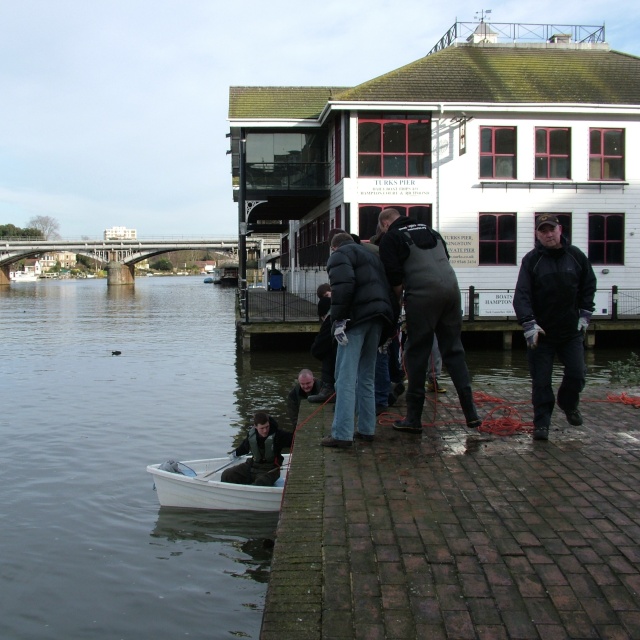
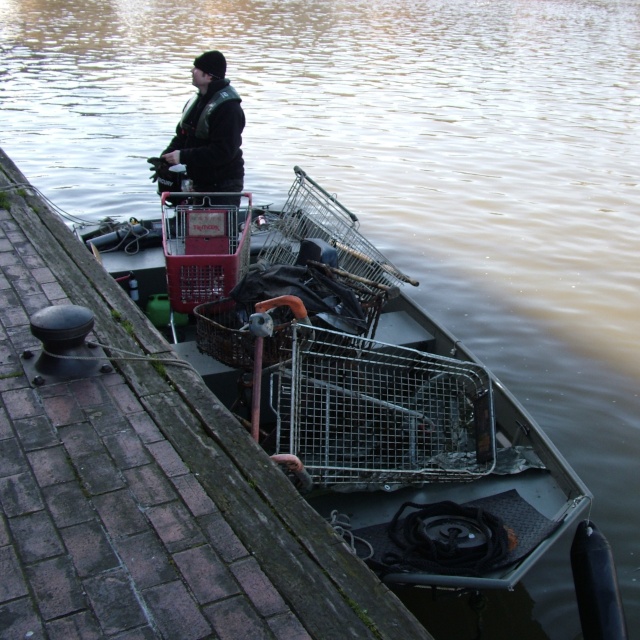
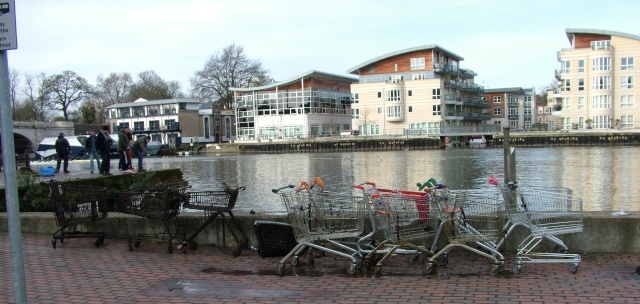
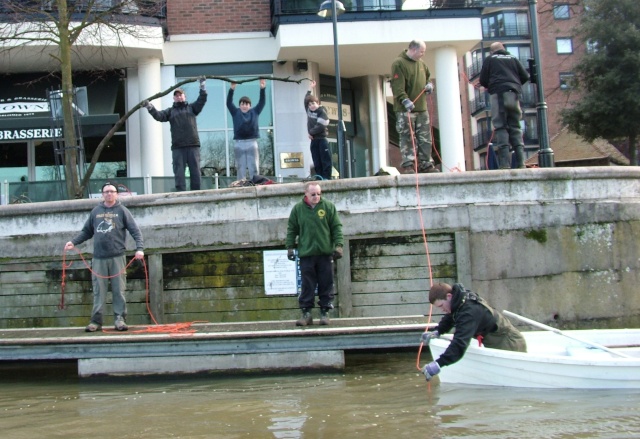
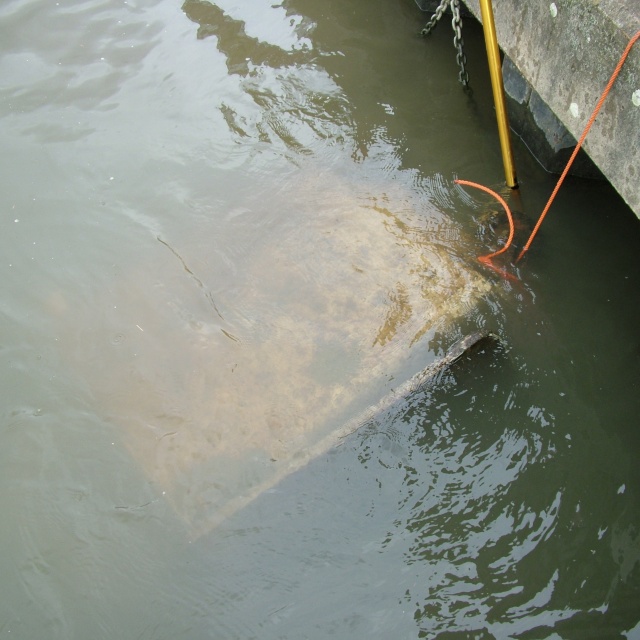
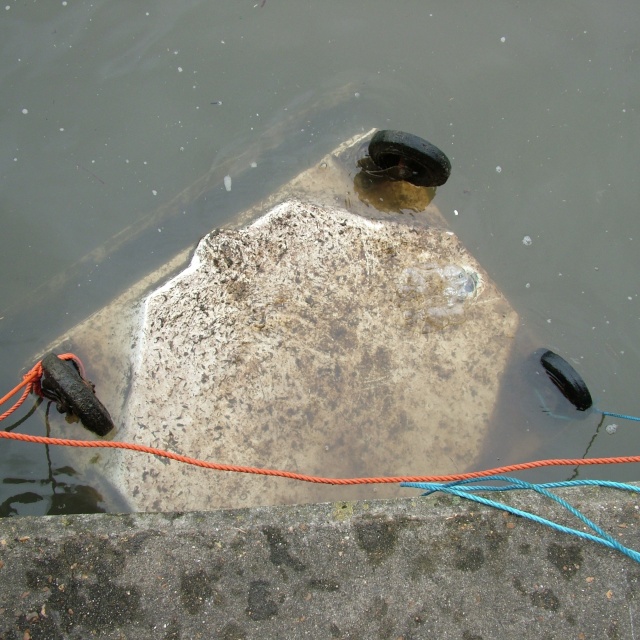
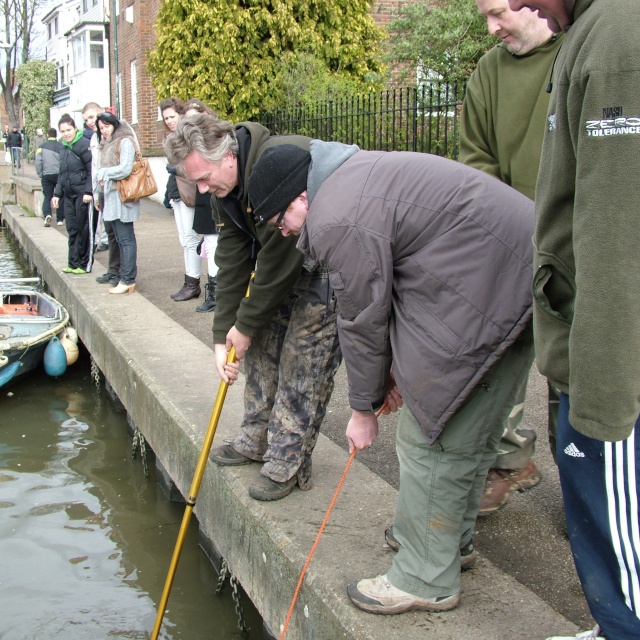
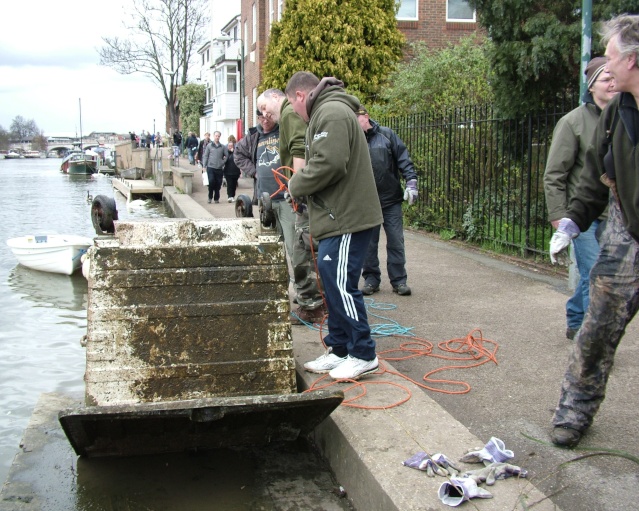

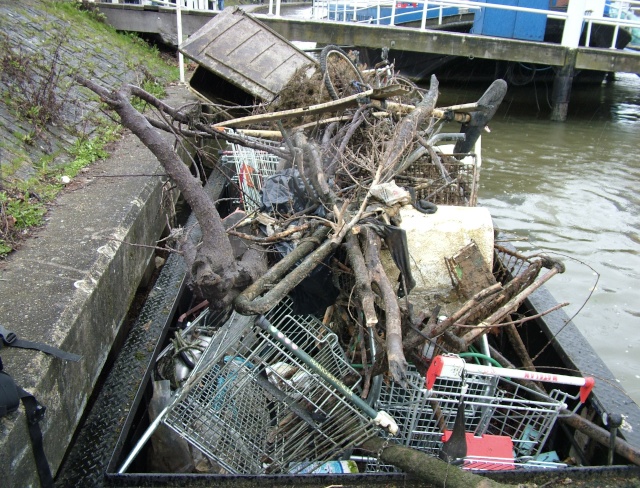
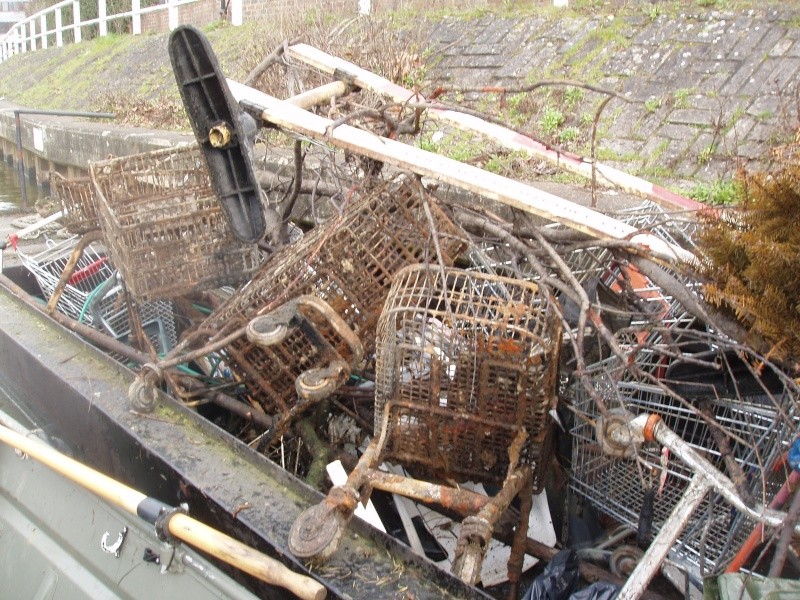
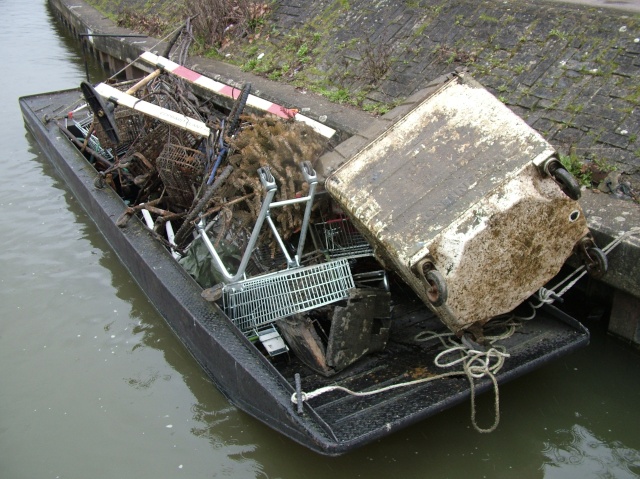
 Tuesday 22 February 2011
Tuesday 22 February 2011
